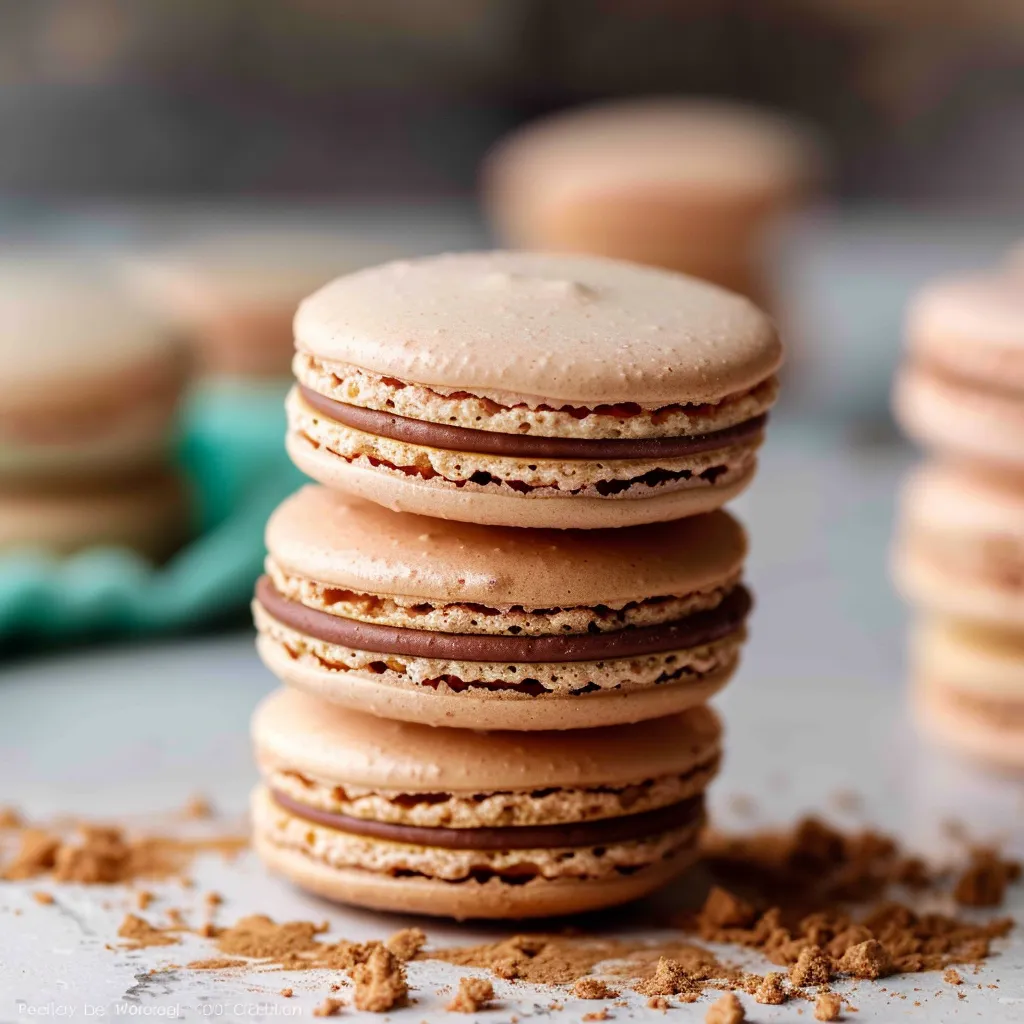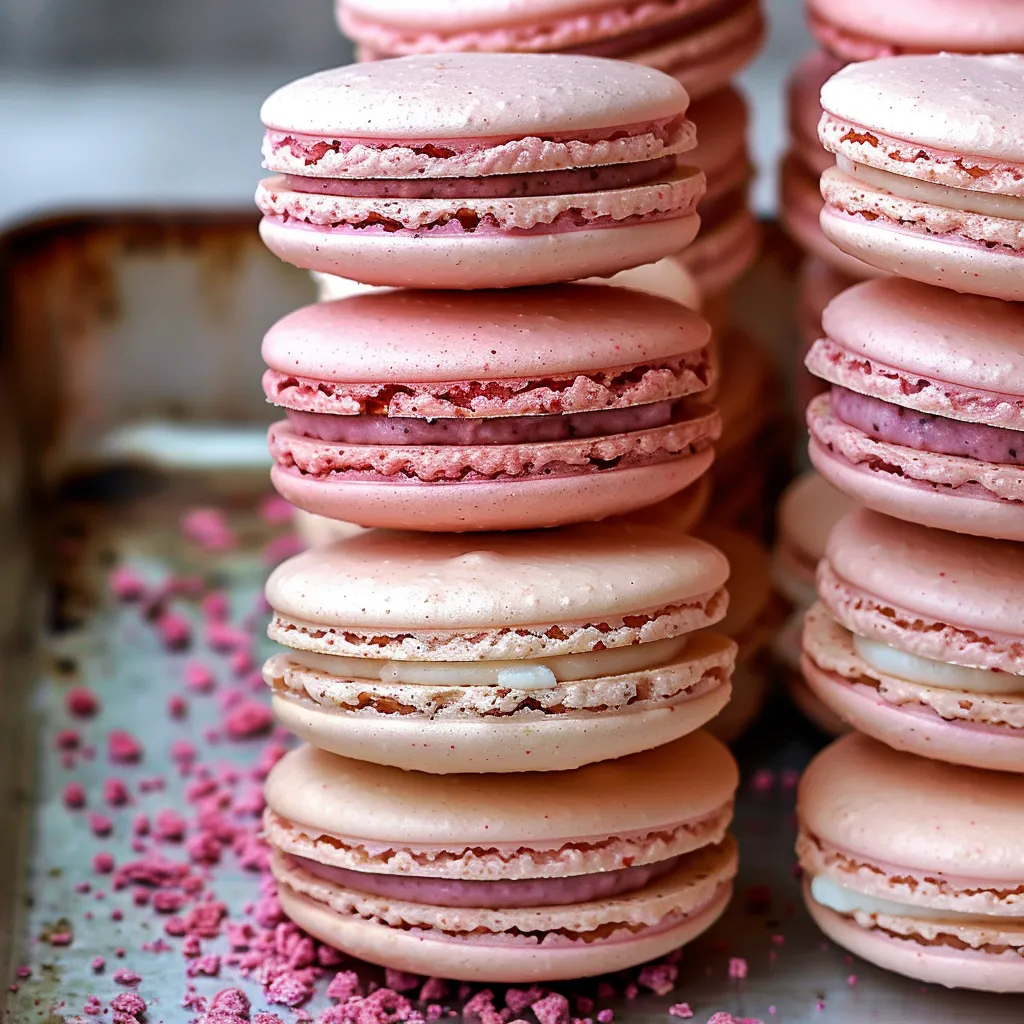 Pin it
Pin it
French macarons - those dainty, vibrant treats that make many home bakers nervous. But here's a secret: if you follow the right steps and pay attention to details, you can whip up these fancy cookies in your own kitchen. After trying batch after batch (and yes, dealing with some big flops), I've come up with a surefire way that takes the guesswork out while giving you picture-perfect macarons every time.
I'll never forget when I got my first perfect macaron - flat top, cute ruffled bottom, and just right inside. It felt like I'd won the baking lottery! Now I get a kick out of showing others how to do it too. Even my teenage niece nailed these on her second try with these tips.
Key Ingredients
- Almond Flour: Needs to be extra fine and double-sifted - don't try to skip this step. I always grab Bob's Red Mill for the best outcome
- Egg Whites: Let them sit out for a full day at room temp for the best stability
- Powdered Sugar: Run it through a sifter to get rid of any chunks that might ruin your smooth tops
- Granulated Sugar: Helps your meringue stay firm - add it bit by bit for best results
 Pin it
Pin it
Easy How-To Guide
- Get Everything Ready:
- Weigh all ingredients with a kitchen scale. Double-sift your almond flour and powdered sugar, throwing away any bigger bits. Get your baking trays ready with parchment or silicone mats. Set up a piping bag with a round tip. Make sure egg whites have zero yolk and aren't cold.
- Whip Up Your Meringue:
- Start beating room temp egg whites on medium until they foam up. Slowly sprinkle in your regular sugar while still mixing. Turn up to medium-high and keep going until you get stiff, shiny peaks. Want color? Add a tiny bit of gel food coloring for light shades. To check if it's ready, flip your bowl - nothing should move.
- Mix The Magic Batter:
- Add your sifted dry mix to the meringue in three batches. Use a rubber spatula to fold with a J-shape, making sure to scrape everything. Keep folding until your mix flows like thick honey and sinks back into itself after 20-30 seconds. Test by lifting your spatula - batter should fall in a steady stream. Stop right away when it looks right - too much mixing makes flat cookies.
- Pipe Like A Pro:
- Fill your piping bag halfway. Hold it straight up and down over the tray. Squeeze out 1-inch circles, keeping steady pressure. Pull straight up with a quick twist to avoid pointy tops. Tap trays hard on the counter 3-4 times to pop air bubbles.
My first shot at making macarons was awful - flat, cracked shells stuck all over the paper. But that mess taught me why each step matters and why you can't rush things.
Taking Time To Rest
After piping, let your shells sit out until they form a skin - you should be able to lightly touch them without getting sticky fingers. This usually takes anywhere from 30-60 minutes, depending on how damp your kitchen is.
Watching The Heat
Your oven's real temperature is super important. I always stick a thermometer in there and tweak as needed. Too warm and they'll crack open; too cool and you won't get those cute frilly bottoms.
After tons of macaron batches, I've found that getting them right comes down to little things. You can't rush these cookies or wing it with the recipe, but that's what makes them special. Every batch teaches you something, and when you finally get that perfect shell with those cute little feet, smooth tops, and just the right bite, it feels amazing. Don't worry if your first try isn't perfect - even top bakers had to learn somewhere, and each batch gets you closer to nailing it.
 Pin it
Pin it
Frequently Asked Questions
- → Why do they need to rest before baking?
- Resting makes a dry layer on the top, which creates the smooth finishes and those famous 'feet' when baking.
- → What are 'feet' on a macaron?
- They're the ruffled bottoms that show the shells were shaped and baked just right.
- → Why refrigerate them before eating?
- Letting filled macarons chill for about a day or two lets their flavors combine and gives them the best chewy bite.
- → How do you know the batter’s ready?
- It should flow like thick lava, with ribbons blending back smoothly in 10-15 seconds.
- → What’s the deal with room-temp egg whites?
- When they’re not cold, they whip up better and stay stable enough to support your shells.
